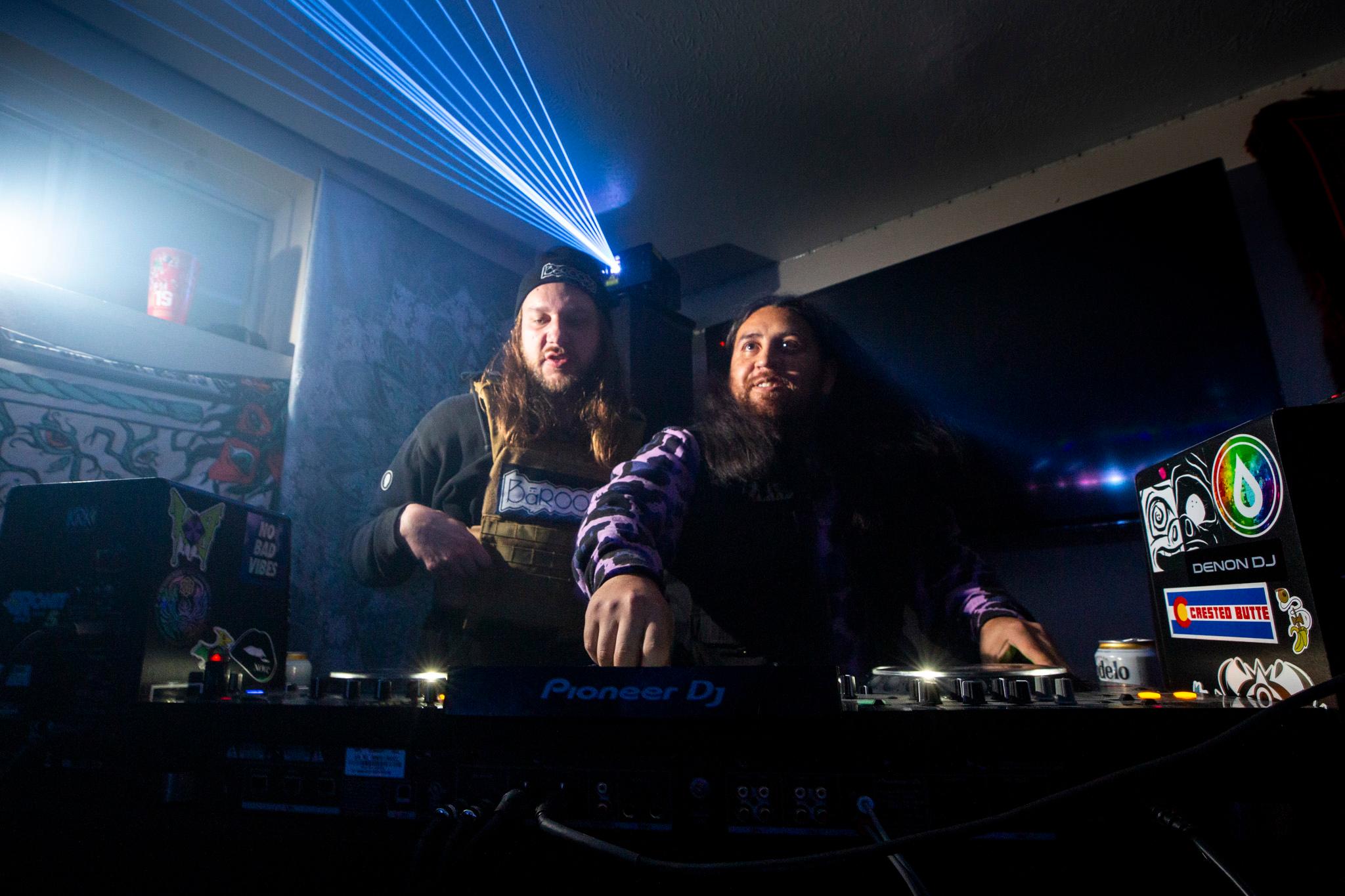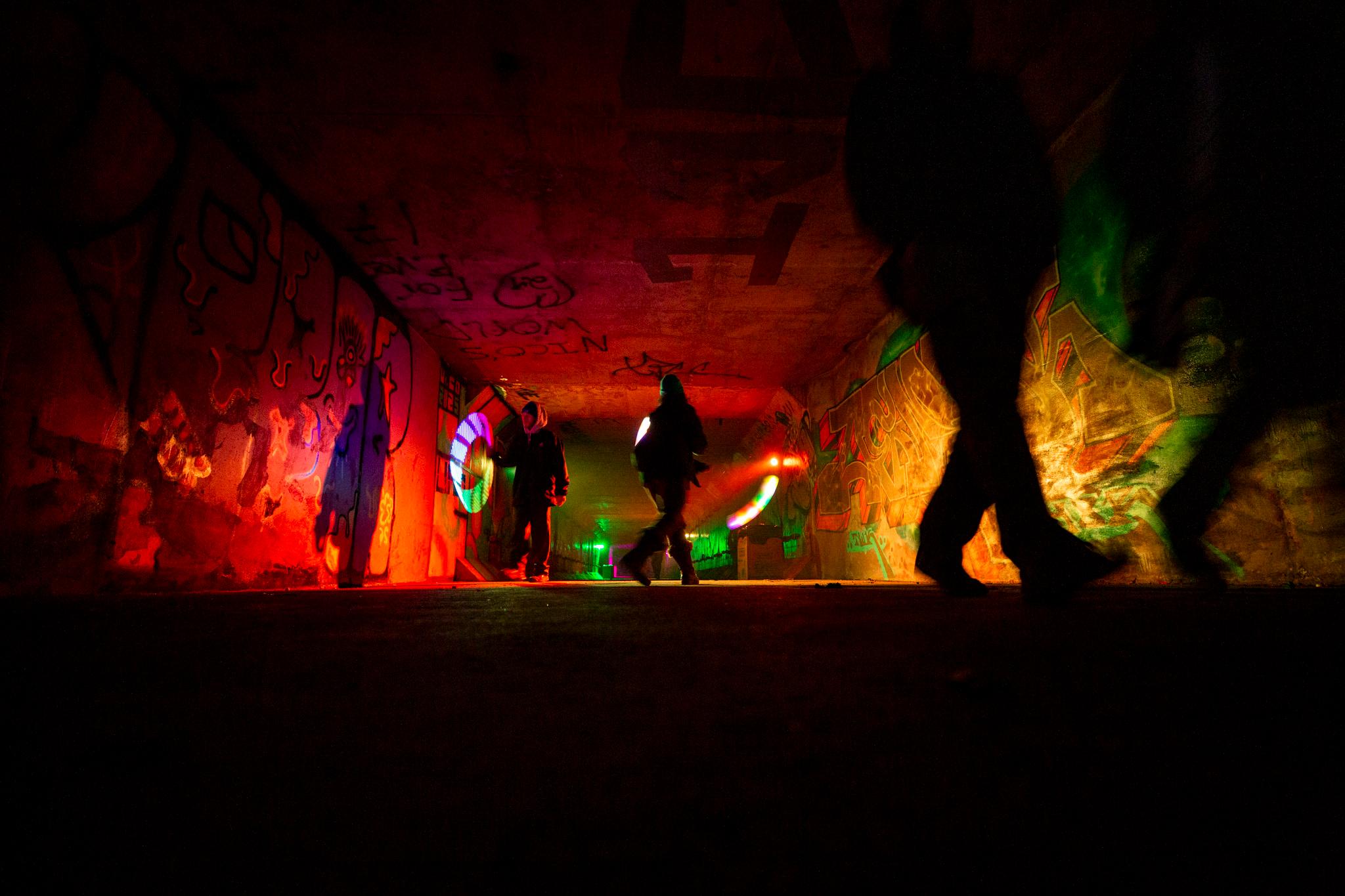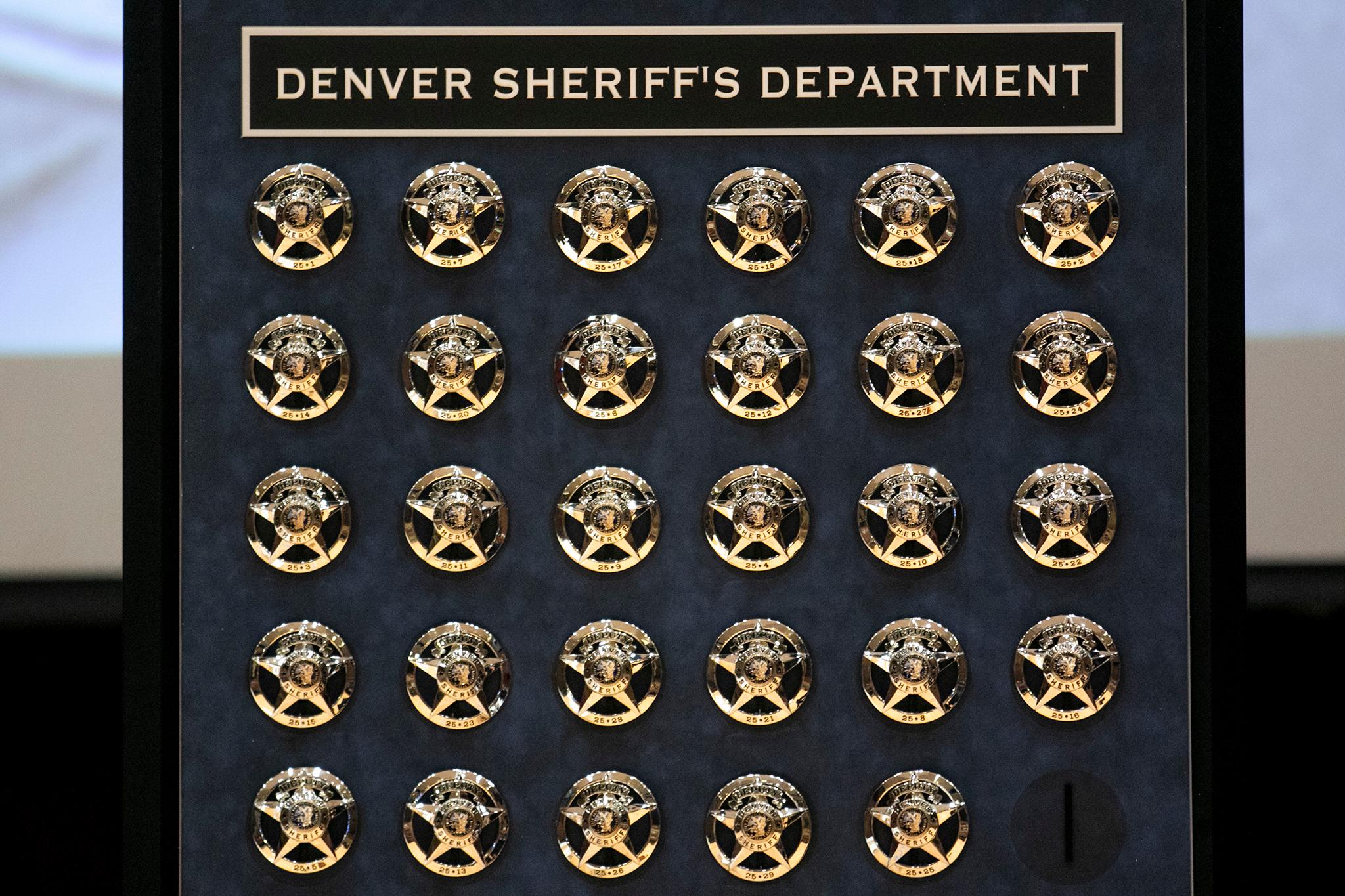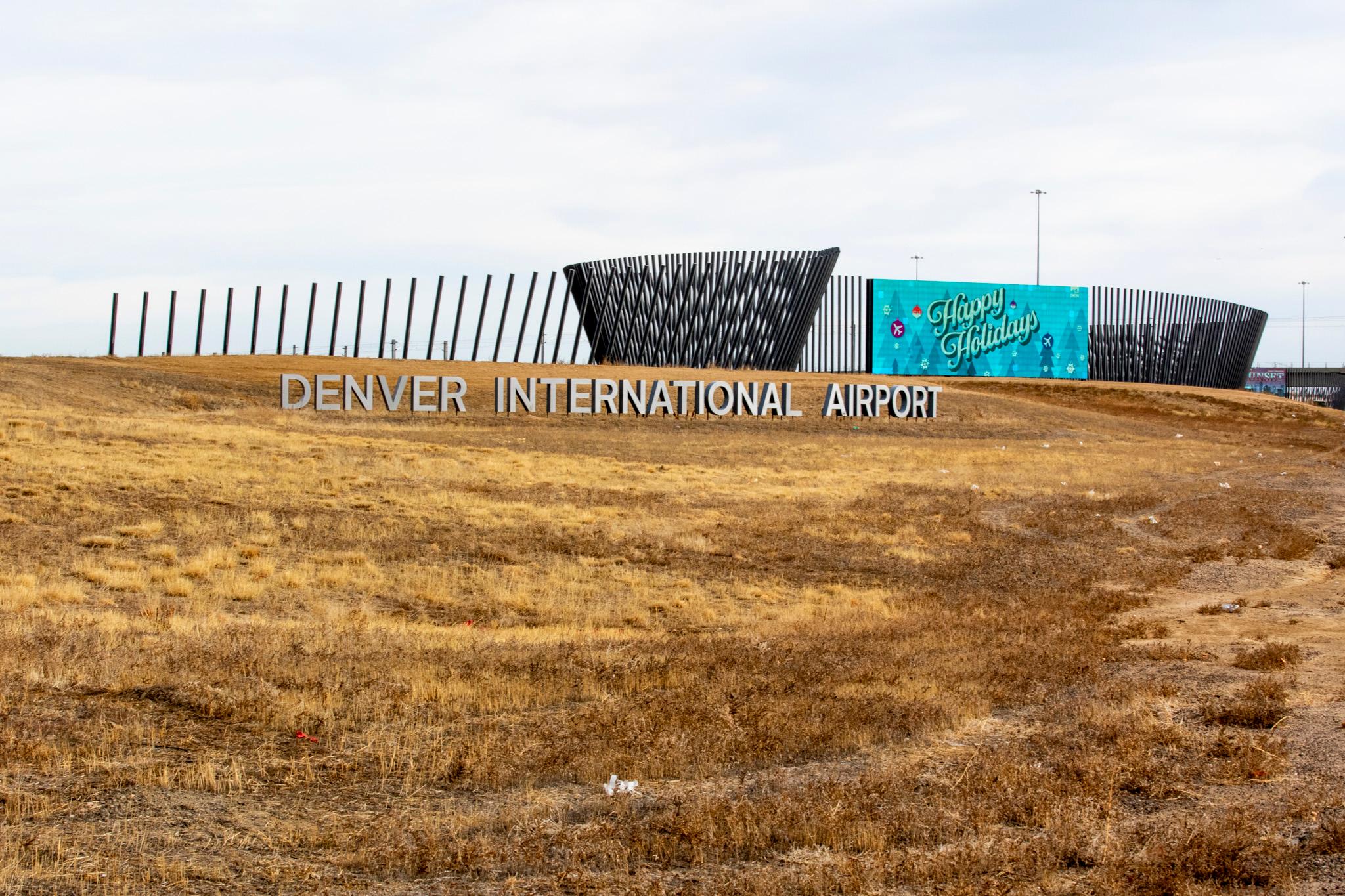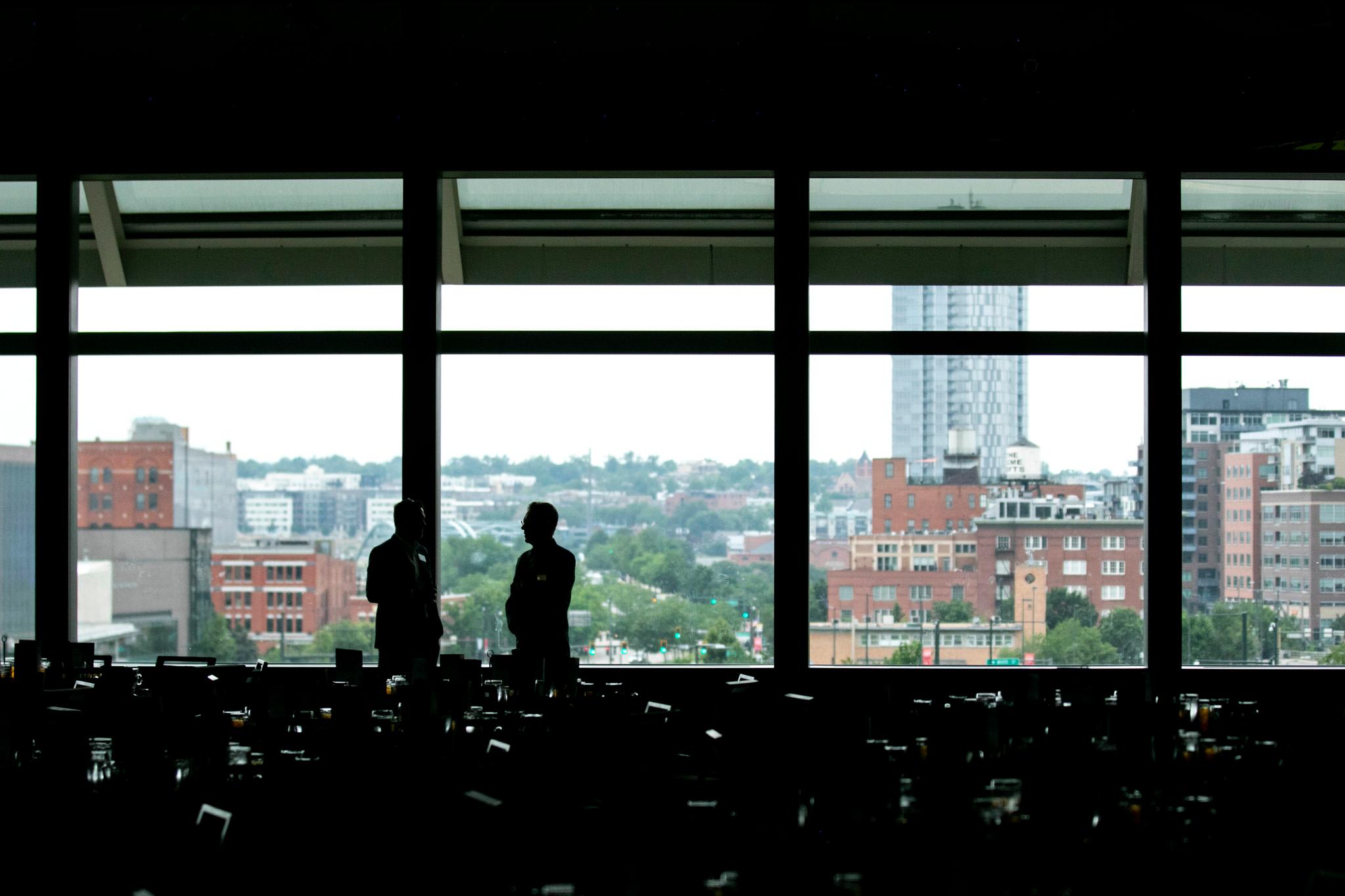On a recent Friday, a squad of thirty-somethings hauled hundreds of pounds of gear over a creek, down a field of boulders and into the dark mouth of a stormwater drainage tunnel.
It was beautiful down in the damp concrete bunker, once the hauling, wiring and setup was complete. By sunset, the crew’s lasers had turned the graffitied walls and ceiling into a glowing funhouse. Thumping bass echoed down the long, dark culvert, which was built to carry floodwater several hundred feet toward the South Platte River.
Zack and Trapa, the dubstep duo known as Barooka, were ready to usher dozens of people inside for a night they wouldn’t forget. This was their first event, and they just knew it would be great. They were joining the city’s literal music underground.
Videos of bumping subterranean clubs have become a thing on Denver’s Instagram feeds — ads for parties in secret places. We saw one in mid-October that led us to Barooka’s show under Ruby Hill. The DJs and their manager, Scott Villanueva, agreed to let us document the night, wherever it led.
Zack (his first name) and Trapa (his nickname) asked that we not use their last names. This party wasn’t strictly legal, which you’ll hear about in a bit, so we agreed, hoping to document a cultural phenomenon in an unusual spot. (Ed. note: Culverts and other flood infrastructure are dangerous. Anyone entering them risks injury, death or legal consequences. - AK)
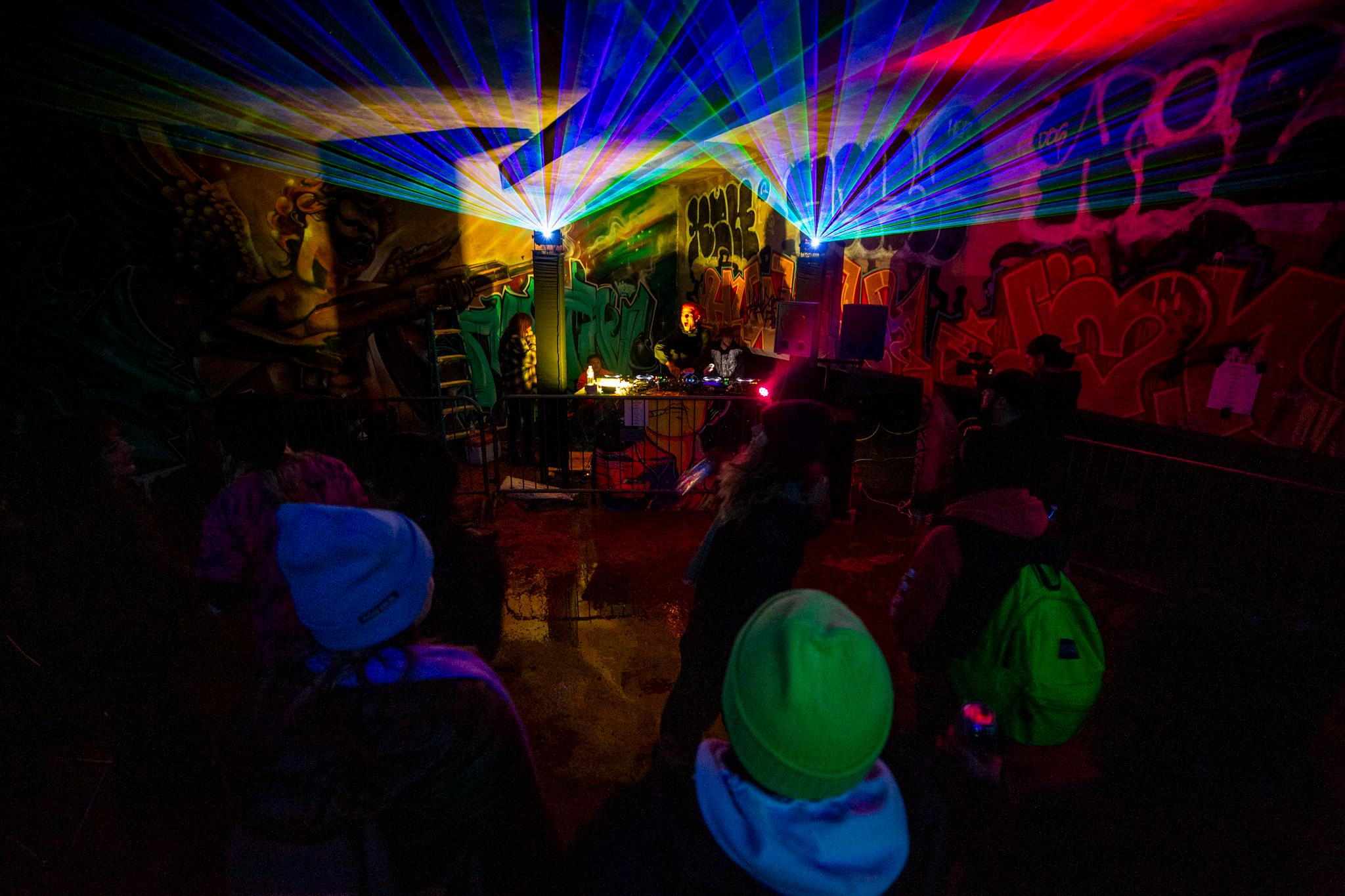
They decided to go underground.
Villanueva and Trapa have been friends for years, back when they lived at the University of Texas at Austin and made money producing concerts at big, well-funded frat parties. Those gigs ended during the pandemic.
There wasn’t much tying them down, so they moved to Denver, drawn in part by Capitol Hill’s Black Box club. The venue made Denver a pillar of the nation’s dubstep scene, a church to the chopped and twisted electronic music they worshipped.
It was at a socially distanced show at Black Box that Trapa met Zack, an East Coast exile who moved west to follow the music and dedicate his life to making some of his own. They bonded over their endless energy for the genre and started collaborating.
“We both were sitting on a good amount of music and the flow of creativity between us and our personalities and everything, it just ended up working out really well,” Zack remembered.
But finding an audience as a budding dubstep duo can be tricky. The tools to make music are more accessible than ever. The internet is full of artists and advertisers, not to mention synthetic AI-powered musicians, trying to grab what little attention exists.
“You have a hundred thousand people competing for a hundred opportunities and to cut through all of the noise,” Zack said. “It's so difficult to just break through all the other stuff and have just that one shot.”
Without a following, Villanueva said up-and-comers rarely get the chance to play Denver’s hallowed venues. And without shows, it’s all the more difficult to get noticed. They would have to make their own breaks.
“So much of what gets you booked today is social media. It's not really the sound or your music that's getting you booked in these spaces,” he told us. “We’ve just got to go raid a tunnel and invite everyone, and then we get to curate these events rather than have to cater to what's going to sell the most in a venue.”
A drainage tunnel at the end of Sanderson Gulch, near Ruby Hill Park, would be just the ticket.
They knew people had put on shows there before. It was remote, mostly surrounded by warehouses and open space. The chamber inside was insulated by earth and concrete, so they could blast their beats without much of a disturbance outside.
The city cautions that these kinds of places are, obviously, dangerous.

“For numerous reasons, it’s a bad idea to get into a stormwater pipe or culvert,” wrote infrastructure spokesperson Nancy Kuhn. “First and foremost, there’s a drowning risk, as it’s meant to carry floodwaters. In addition, it may not be sanitary, the air quality in the enclosed space could make someone sick, and there could be wildlife in there.”
But they’ve also proved too cool for ravers to resist. The culvert is the kind of place where Trapa thought he could take his audience on a journey they wouldn’t forget. It’s why he wanted to make music in the first place.
“It's all about how we can impact even just one person's life,” Trapa said. “People want experience. That's a night that can change anyone's life. And as long as we have an impact to change one person's life in a positive way, I think that's why we keep doing it,” he said.
Of course, it would also be illegal.
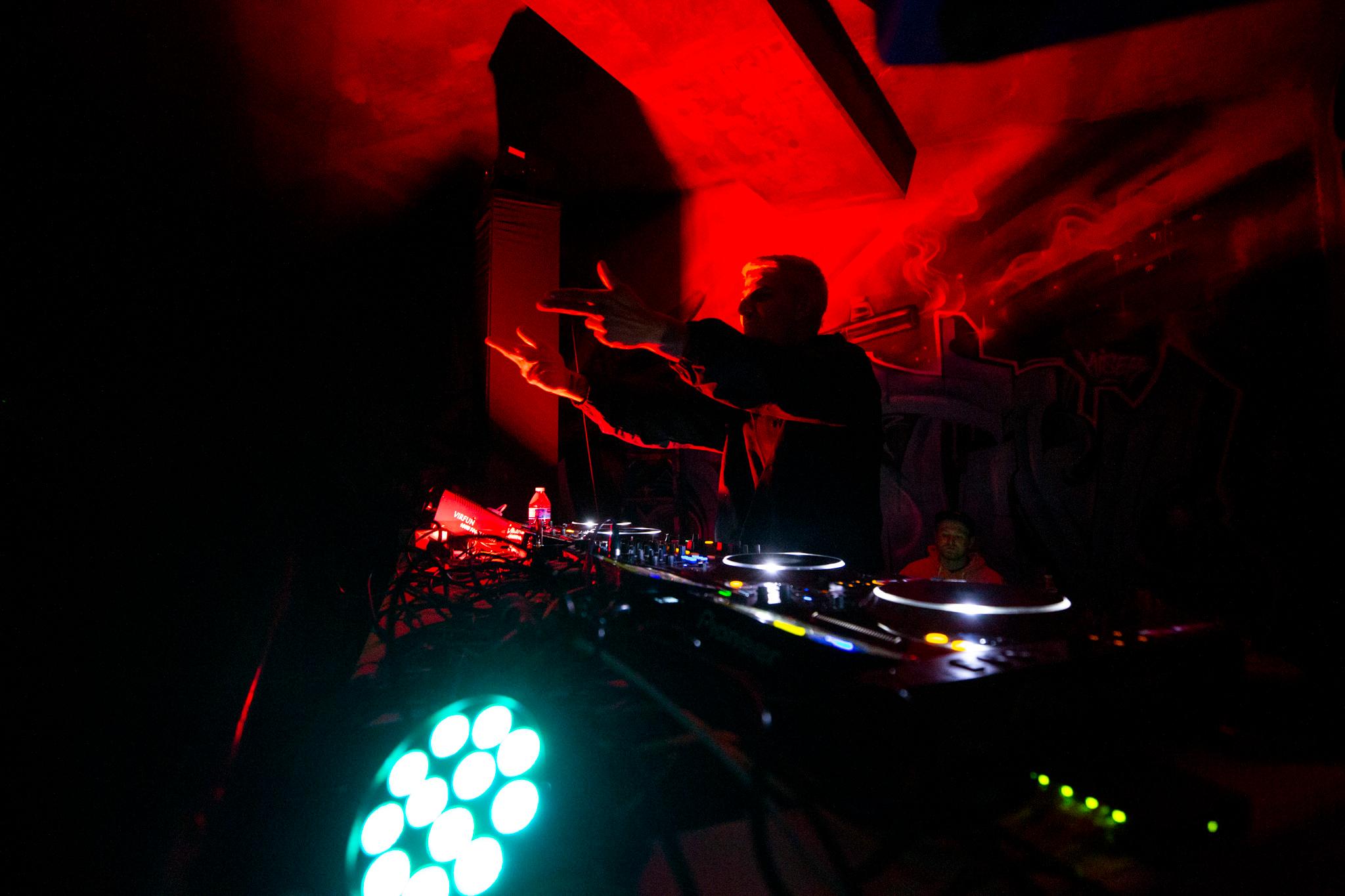
They suspected things could go south. They were correct.
Villanueva said he’d sold over 100 tickets leading up to the event for $15 each. Interested parties had to text “rave” to a number, pay through a URL that was texted back, then wait until the night of the show for directions.
It was a way to preserve some secrecy.
“We can't really clear a tunnel,” Villanueva said.
Despite the precautions, there was already some trouble brewing before the event started on a warm November evening.

Someone had posted about the show on the Ruby Hill neighborhood Facebook page, one of the city’s very active online civic spaces.
He thought the tattletale might have been one of the “riddim kids,” a group of younger ravers dedicated to a niche, debated subgenre of electronic dance music. The younger crowd had played a loud, conspicuous show in the mouth of the tunnel, and Villanueva had warned them not to blow up the spot — leading to some beef, he said.
Denverite could not reach the riddim kids for comment.

The Facebook post was deleted, but someone had already shared photos of Barooka’s crew loading gear into the underground on the morning of the show. A lot of people knew about their secret. They went forward anyway.
A flier taped to a concrete wall inside the tunnel advertised the event as “The Muck.” It was complete with nine slots from 8 p.m. to “close,” with the last set starting at 2:30 a.m.
The party was just beginning to warm up by 10 p.m., with Rainbow Boy starting his set and more people picking their way down to the tunnel. There were people checking IDs at the door and an unofficial medic with a bag full of supplies. The guy who brought the lasers said he was federally certified.

They danced through clouds of vapor and fog as the music echoed through the chamber. Then, just as the crowd finally coalesced into a mosh pit, the lights went out. Someone ducked into a concrete shaft to cut off a generator humming in the dark.
“Are we hiding?” someone whispered as the crowd shushed itself into silence.
Yes, someone said from the dark. The cops were outside.
For a split second, it seemed like there was a chance to stay quiet and pick this up later. But, then, hard-soled footsteps echoed from the tunnel’s entrance as bright lights appeared around a corner.
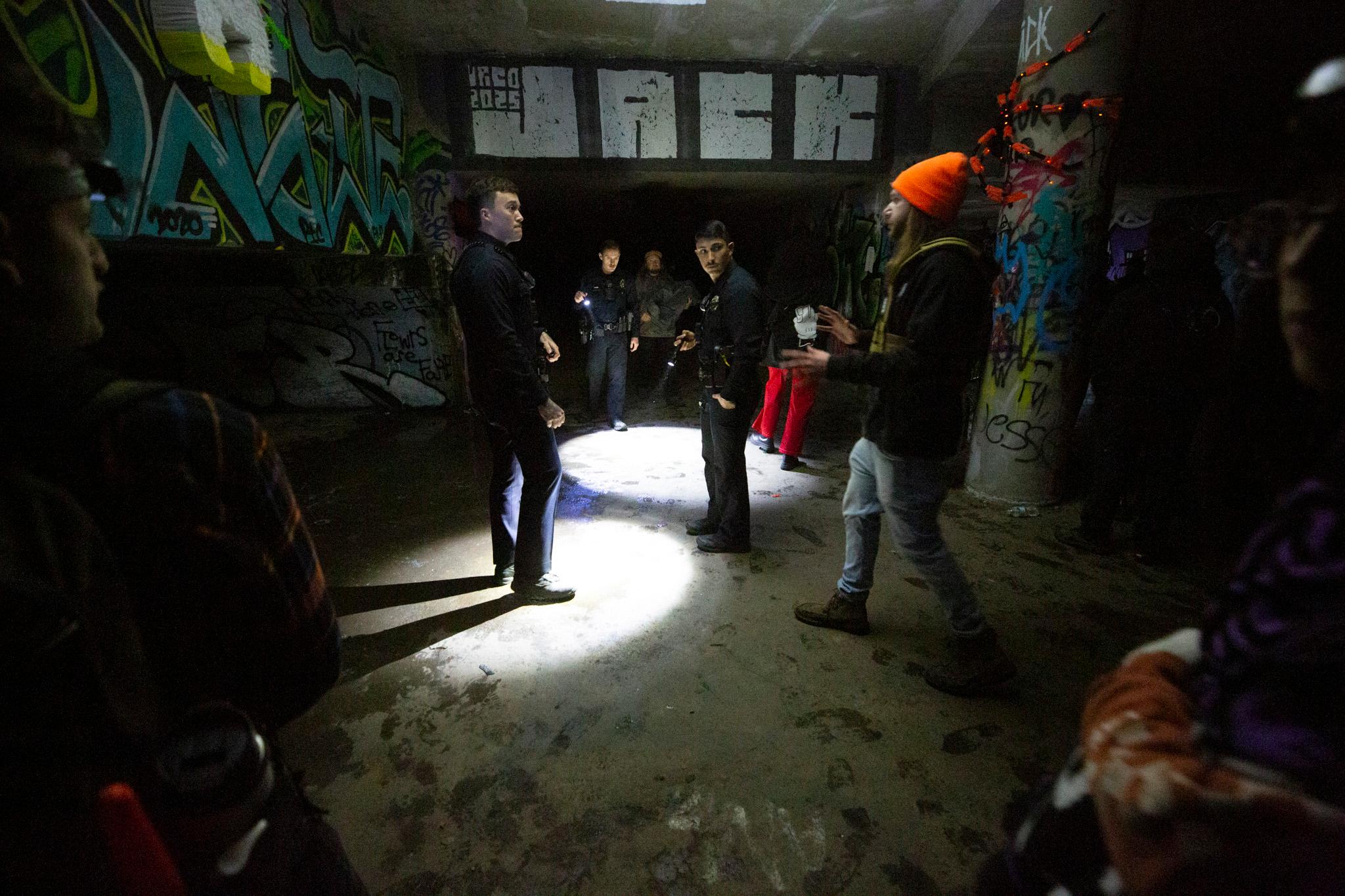
In EDM, the 'underground' has a legacy of getting shut down.
As many as ten Denver police officers strolled into the party, most looking younger than the people they came to kick out.
“You’ve got to get going. This is pretty cool though,” one said.
“This is sick as f***,” one of the ravers responded, as the cop nodded in agreement.
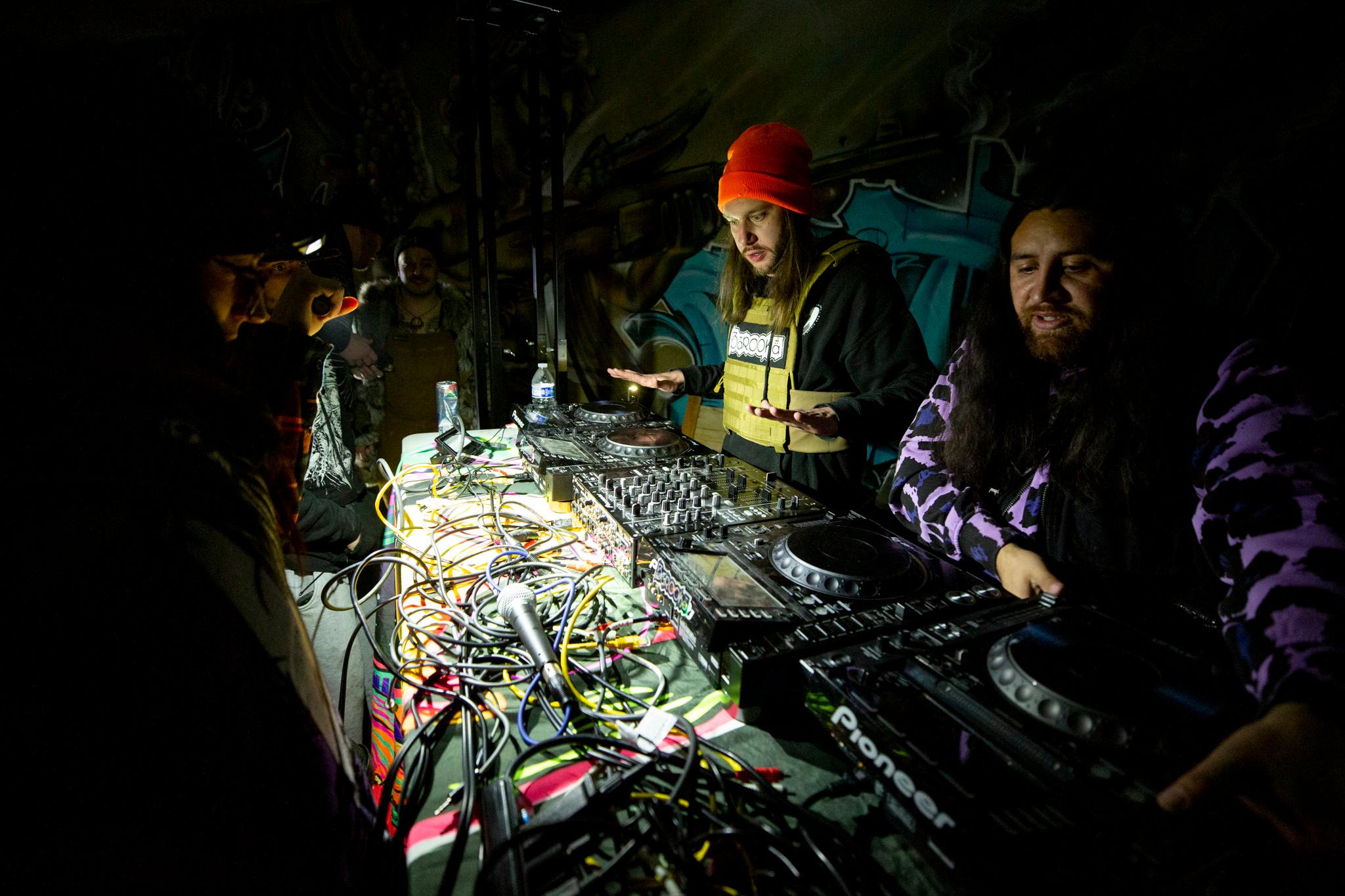
One officer said they were alerted to crowds outside. Another said they got a call specifically about the party. Another said they had no choice — parties like this might end in violence.
Villanueva and Zack cursed the riddim kids as they started to pack up.
“I’m f****** frustrated,” Zack said as the work began. “We’re not hurting anything.”
Some of their guests ducked out, heading back to the surface to get away from trouble. But others stayed to help Barooka, Villanueva and their friends extract the party from this deep hole.
The cops shined their lights as the partiers unhooked all of their electronics, threw nests of wires into bags and hauled out laser towers and steel fencing. It took four people to lift their biggest speaker up to the street.
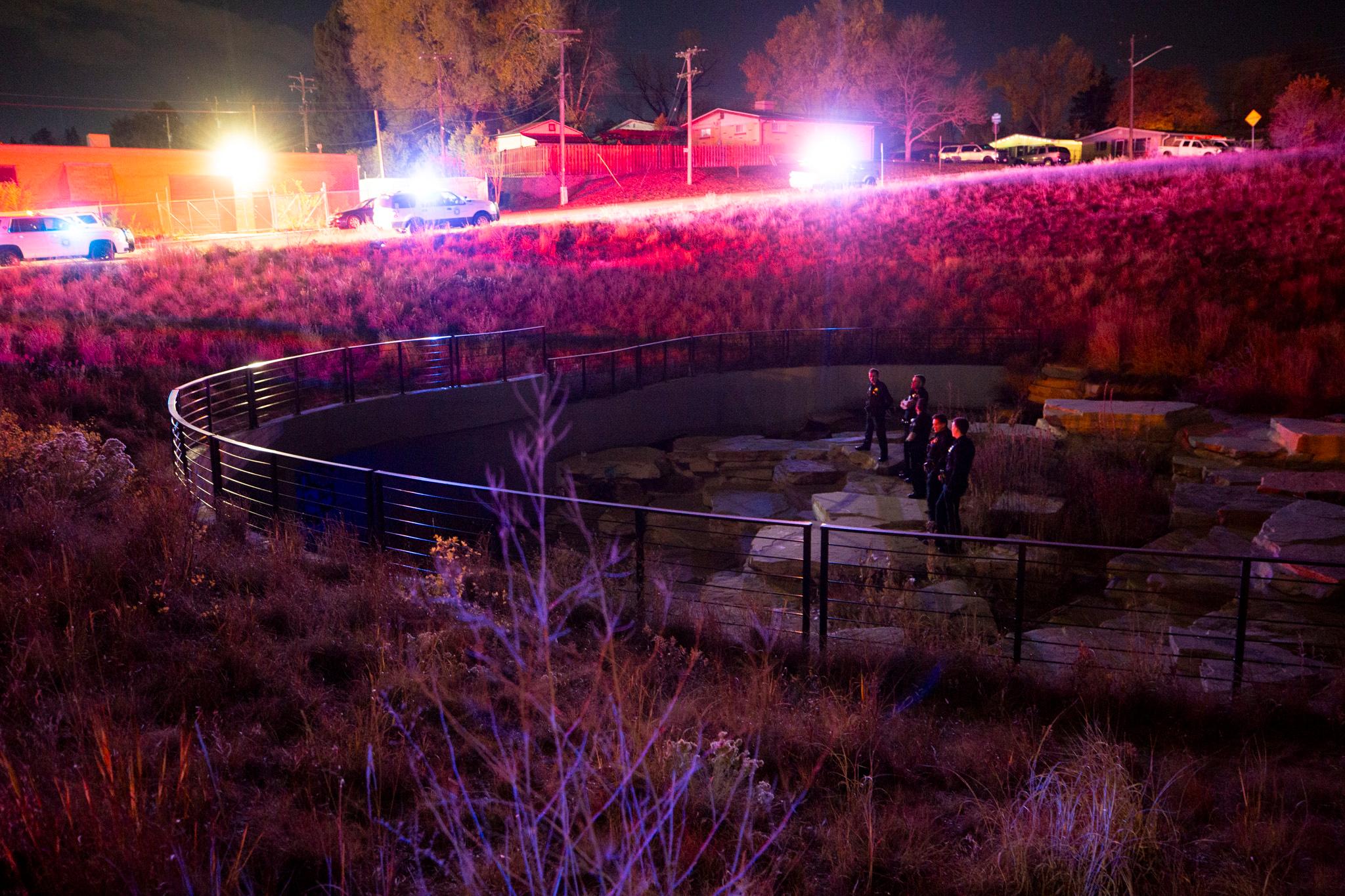
The police watched as they worked. They didn’t hassle anyone. Everyone was polite. Nobody ended up in handcuffs.
It could have turned out differently: Someone organizing an illegal rave in a storm drain might face charges or fines related to trespassing and safety code violations, not to mention civil liability if someone got hurt.
Burke Gleason, who showed up after the party ended, said he’s seen worse.
“I grew up in Philly, New York, Pittsburgh, that area. Back in the day when EDM was really underground, you were doing real warehouse raves and you were straight up running from the cops,” he told us.
The scene’s secrecy, its illicitness, is part of its culture and history, he said.
“The original point of electronic music was it was for weirdos. It was for outcasts,” he said. “Now, every single f****** show I go do, it has become mainstream enough that you get the Chads, the Brittanys, the f****** people who, when I got into EDM, I was going to avoid.”
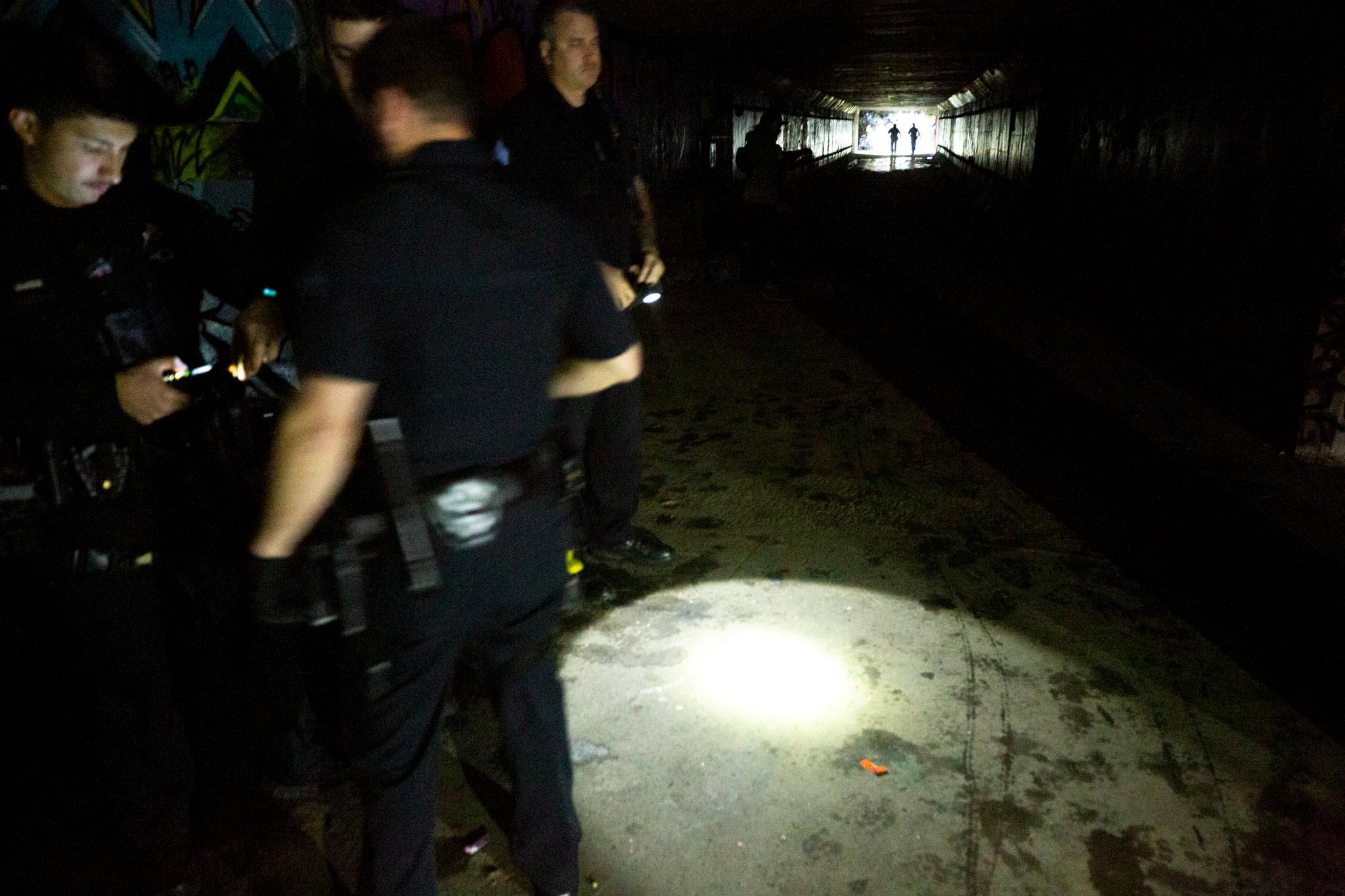
The life and death of Denver's DIY venues
Denver has always had secret places for subcultures to thrive. An old flour mill near Union Station was a hotspot for parties and runaways before urban renewal transformed downtown into a high-end district.
Ten years ago, when Brighton Boulevard was little more than a dirt road through a warehouse district, artists and partiers flocked to an old building that housed Rhinoceropolis and Glob, two beloved DIY venues.
While spaces like these were never fully permitted, there was more room for them to exist before 2016, when a fire tore through Oakland’s Ghost Ship venue and killed 36 people. The tragedy unfolded in California, but it immediately sent shockwaves through DIY scenes across the country.
In Denver, fire inspectors fanned out to places like Rhinoceropolis, shutting them down over safety concerns and prompting impassioned debates between local creatives and public officials. The city pooled money to support sanctioned creative spaces after the purge.
And though there was some hope that Rhinoceropolis might survive the moment, it never really returned. Some people we met at Barooka’s tunnel rave had heard of it, like a legend from a bygone era. Most had not.
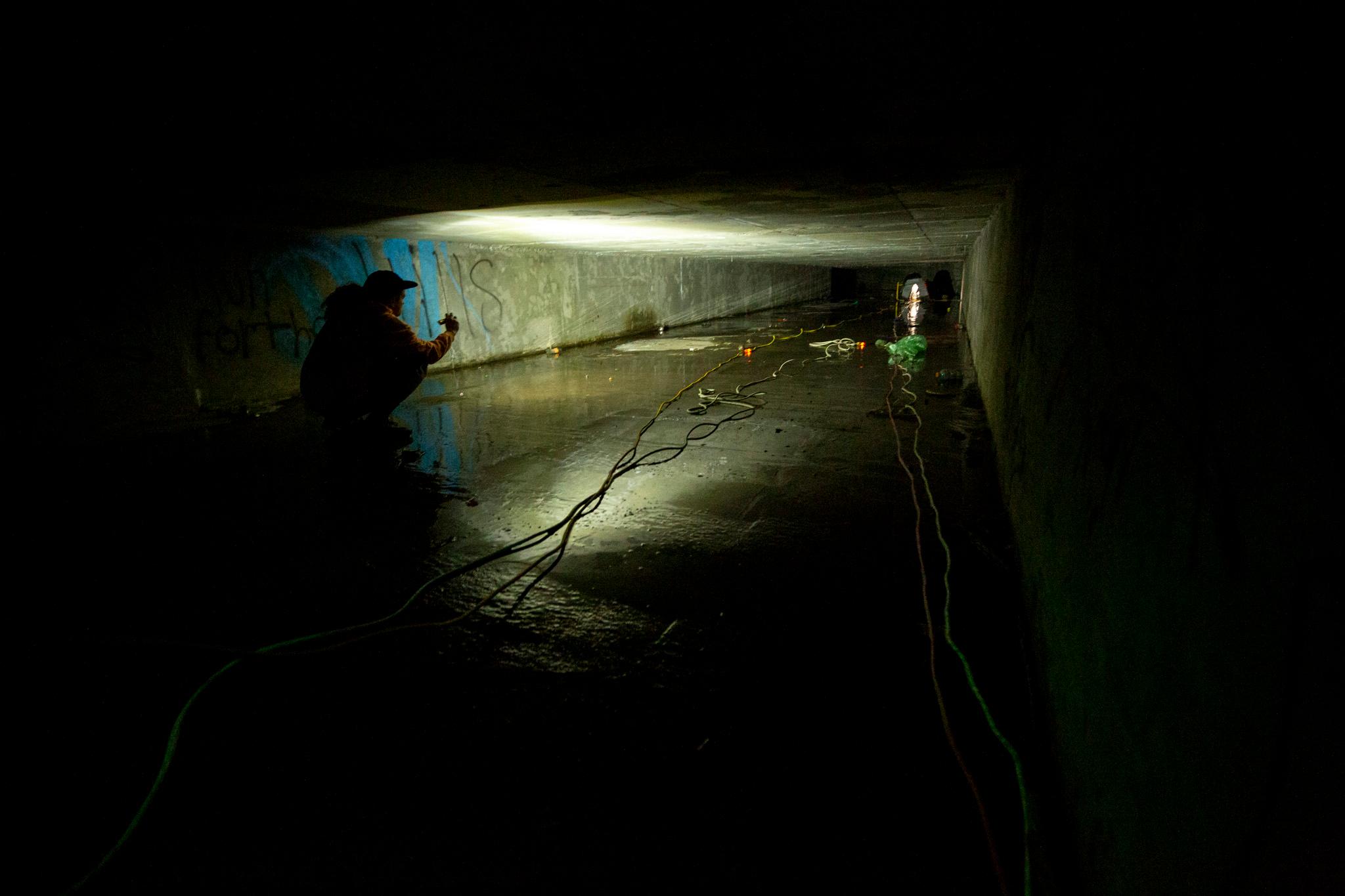
Barooka managed to play their show after all, just not quite where they’d hoped.
It took about an hour for the DJs and their friends to fully move out of the tunnel. Most of the police officers left as they carried out the last of their gear.
One of the guys operating the laser towers had a basement where they could go next. Villanueva was exhausted and thought he might just go home, but his friends helped him rally. He said he was grateful for them.
“They wanted to continue the party, and their resilience is insane,” he told us. “Everyone helping out at the end, too, is proof of how close-knit the scene is. Everyone could have totally bailed on us and just left us there just with all this stuff. But there were people who bought tickets that are helping carry stuff out. So that just kind of shows how special this is.”
Their destination was a suburban home in Lakewood, where the partiers politely left their shoes by the front door as they headed down carpeted stairs to resume their night. This, someone said, is a more standard underground event. They’d still have fun.
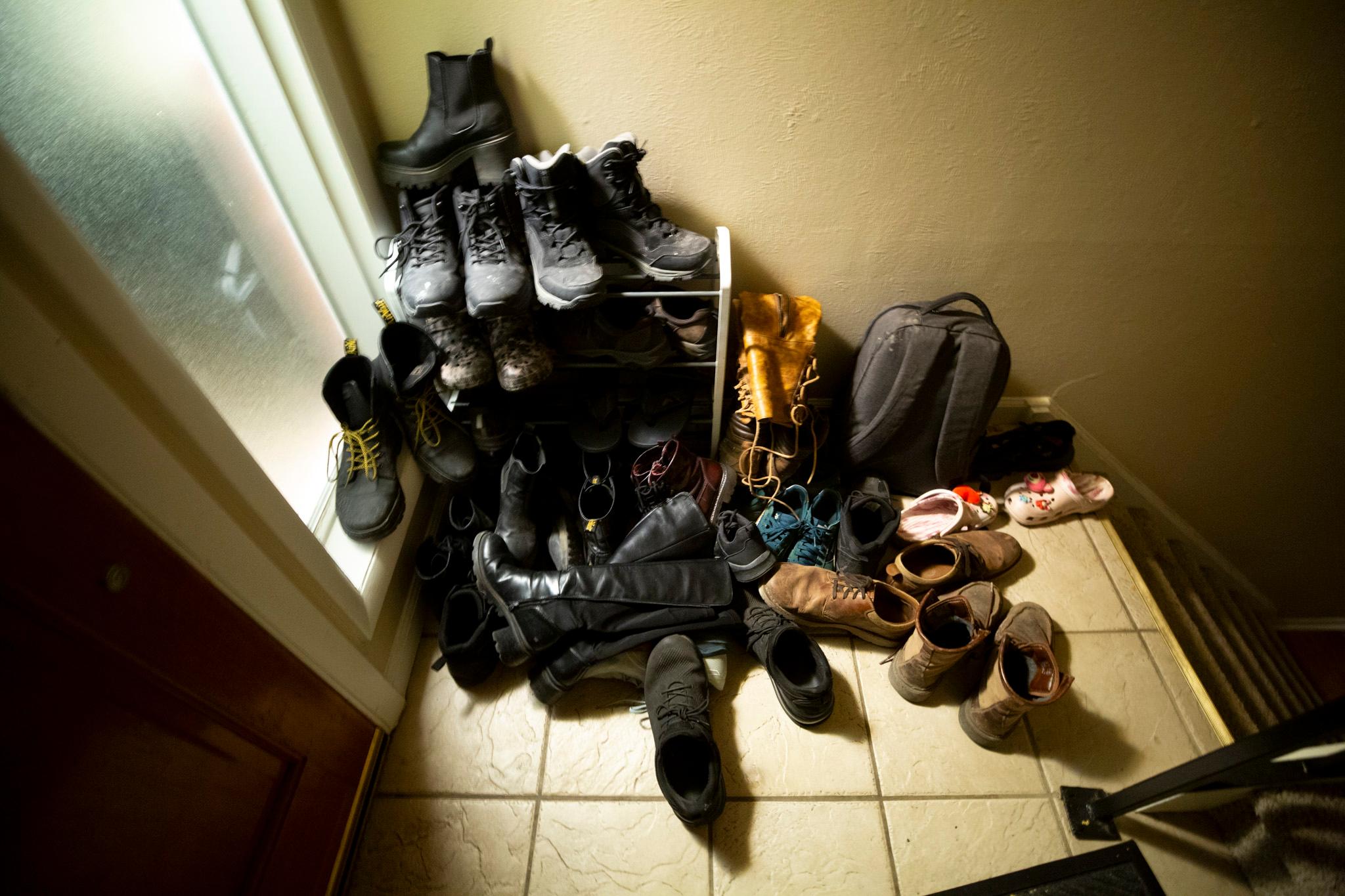
But Villanueva said he’s determined to throw better parties for his friends, to carve out some legal middle ground between unsanctioned raves and the big-name venues that feel out of reach.
The website for his management company, Operavi, details his vision for a “sustainable touring model” that might make it easier for small-time acts to perform for audiences. A week after the cops broke up his party, he’d produced a pitch deck meant to convince a city, like perhaps Aurora, to partner with musicians to activate “underdeveloped and under-utilized property” and give them somewhere to play.
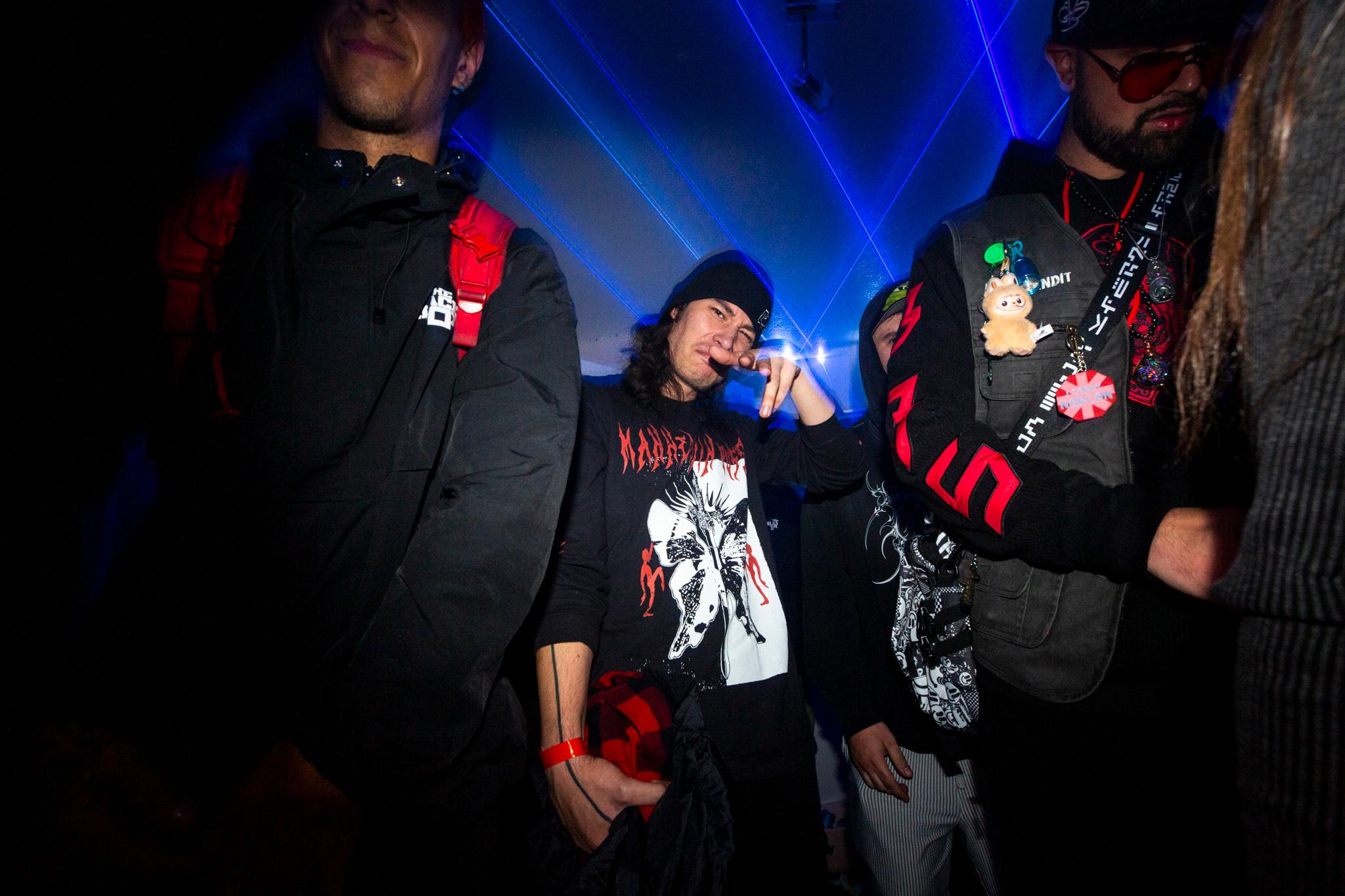
Music manager Scott Villanueva dances in a Lakewood basement after a rave he threw in a Denver drainage tunnel was shut down by the cops. Nov. 7, 2025. Kevin J. Beaty/Denverite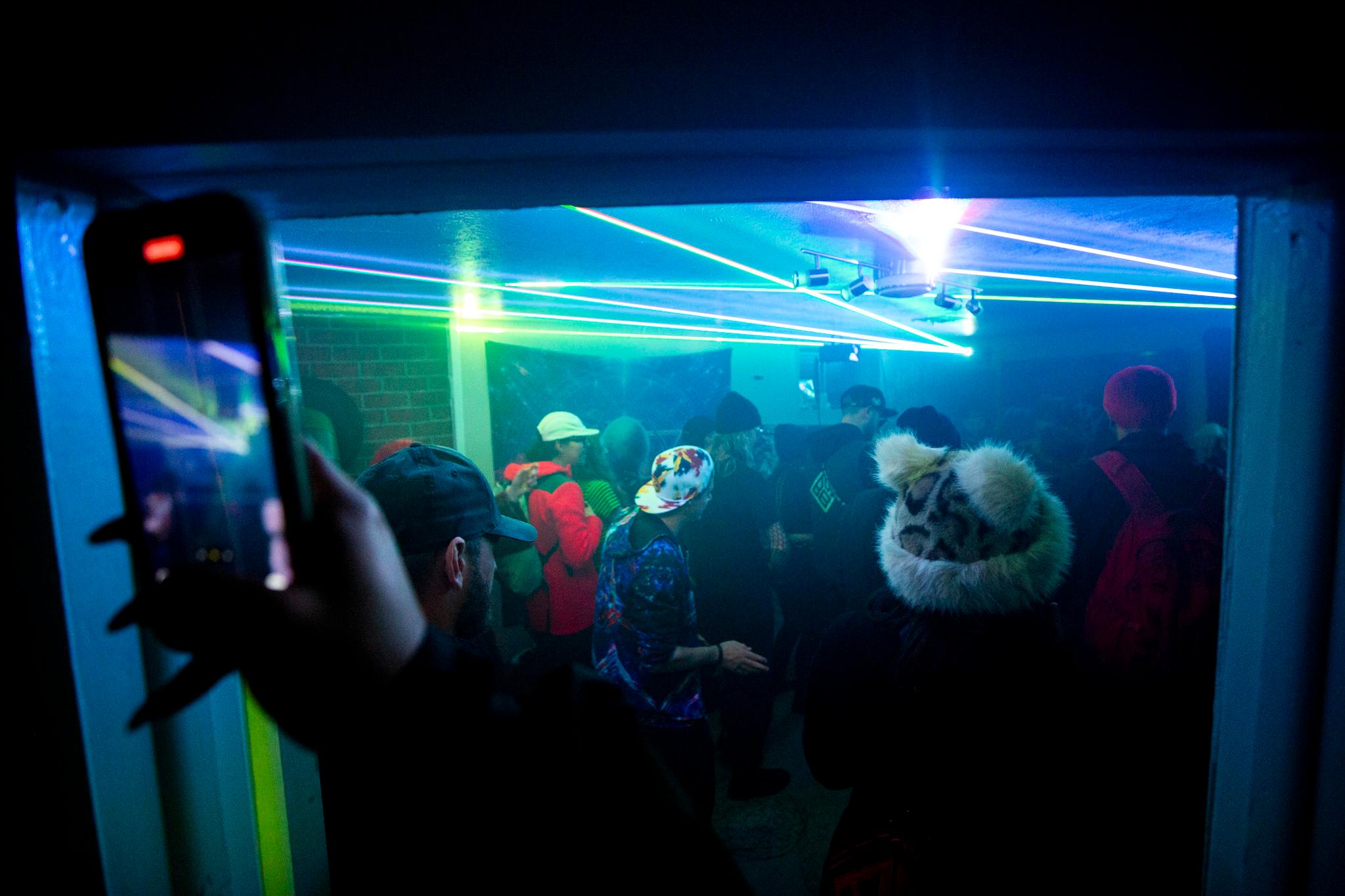
Ravers dance in a Lakewood basement after their police shut down their party in a Denver drainage tunnel. Nov. 7, 2025. Kevin J. Beaty/Denverite
Villanueva said they might have a rooftop lined up for a future event. In the meantime, they still had this basement.
Rainbow Boy finished his set, which was cut off prematurely by the cops.
Then, finally, Barooka got to spin their music. The little room grew thick with sweat as people danced to their beats.
“Thank you guys so much for coming out and supporting us. We were just trying to put our homies on and f****** throw a sick show,” Zack said triumphantly. “So next time, different location. We're going to pay for some permits.”
